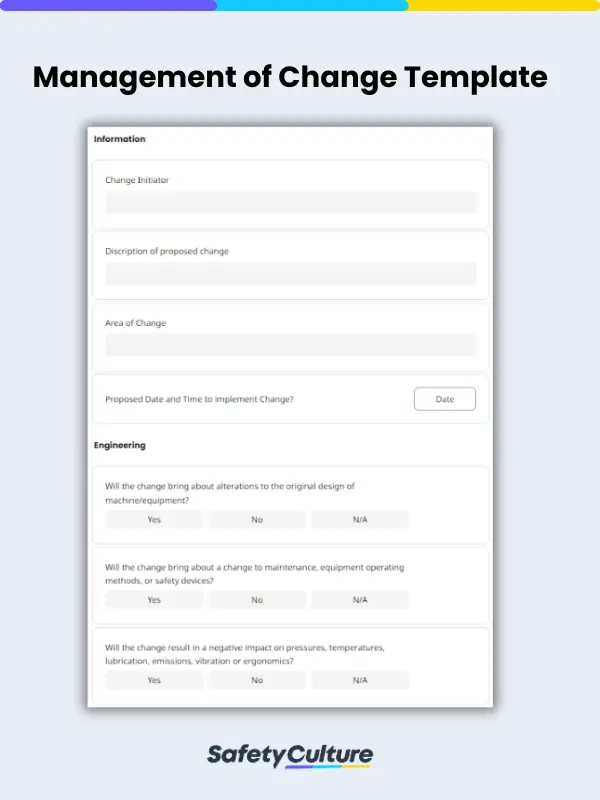What is a Management of Change Template?
A Management of Change (MOC) template is a tool that businesses can use before implementing any significant change in their workplace. It guides safety officers in identifying potential safety and occupational risks that come with enforcing the proposed change. A comprehensive management of change template helps organizations minimize potential negative impacts, create adequate and timely measures, and establish that the proposed change is indeed worth doing.
Why Use Management of Change Templates?
Management of change templates provide a standardized format and structure for documenting changes. This ensures that all necessary information is captured consistently across different types of changes. They also help organizations comply with industry requirements by following a systematic process for demonstrating due diligence.
Additionally, ready-to-use templates such as this prompt decision-makers to consider all the risks associated with any change before they are implemented.
What to Include in a Management of Change Template
Aside from the primary details like the name of the facility, location of the site, name of the change initiator, description and area of the proposed change, and targetted date and time of implementation, a good management of change template should ideally include a review of following items:
- Engineering
- Operating and Design
- Quality
- Operating Personnel
- External Personnel
- Regulations, Standards, or Code of Practice
- Suppliers, Community, and/or Client/User
- Other
- Completion
Since a management of change initiative is not limited to the above aspects, businesses can further customize their own templates according to their needs.


